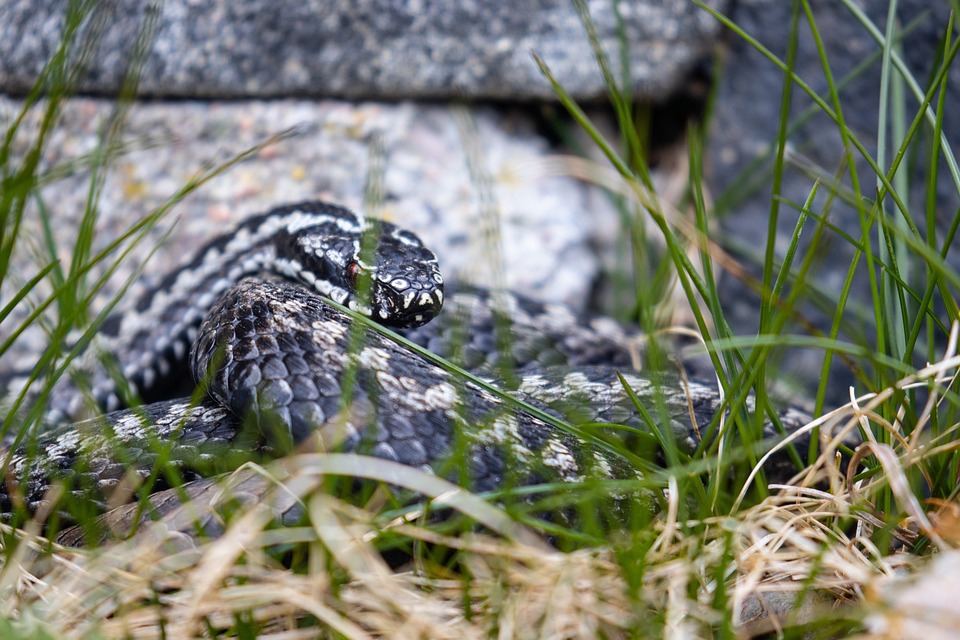When people think about venomous snakes, they usually envision famous viper species such as rattlesnakes, cobras, and mambas. However, there are many lesser-known venomous snake species known as colubrids that can be equally dangerous. The Colubridae family is the largest snake family, and many species within it have venomous bites that can cause significant harm to humans.
Characteristics of Venomous Colubrids
Colubrid snakes are characterized by having a relatively slender body and a large head. They are predominantly nonvenomous, but some species have venomous capabilities. Unlike vipers, venomous colubrids generally lack long, hinged fangs and instead have rear-fanged venom delivery systems. Their venom glands are located in the back of their upper jaw, and they must partially swallow their prey to deliver a venomous bite effectively.
Examples of Dangerous Colubrid Snakes
Though there are many venomous colubrid species, some stand out due to their potential danger to humans. Below are a few examples of such snakes:
- Boomslang: Native to sub-Saharan Africa, the boomslang (Dispholidus typus) boasts a highly potent venom. Victims bitten by this snake experience internal and external bleeding, which can be fatal without proper medical treatment.
- Twig or Vine Snakes: The Thelotornis genus comprises several species commonly found in Africa. Their venom can affect the nervous system and cause paralysis. They are rear-fanged snakes whose venom is weaker than the boomslang’s, but their bites can still be lethal if not treated promptly.
- Red-necked Keelback: Rhabdophis subminiatus is native to Southeast Asia. This snake envenoms its prey through enlarged, grooved teeth at the back of its mouth. People bitten by this snake may experience a range of symptoms such as muscle weakness, difficulty breathing, and even renal failure.
Prevention and Treatment
Though venomous colubrids are not as common as vipers, it is essential to take precautions when encountering these snakes in the wild. Avoid attempting to handle any snake that you are not familiar with or cannot identify. When walking in areas where snakes are known to inhabit, wear protective clothing and heavy boots.
If you are bitten by a venomous colubrid, seek medical attention immediately. Antivenin may be available for some species, such as the boomslang, and can counteract the effects of the venom. For less intense cases, supportive care may be sufficient to help the victim recover. Early treatment can significantly increase your chances of survival and limit potential long-term damage caused by a venomous snakebite.
Conclusion
Venomous colubrid snakes are often overlooked when considering dangerous snake species. However, their venom can be just as potent and harmful as that of their more famous counterparts. To stay safe, educate yourself about venomous colubrids and take necessary precautions when venturing into areas where they may be found.
FAQs
- What is a colubrid snake?
- A colubrid snake is a type of snake from the Colubridae family, which is the largest and most diverse snake family. While many colubrids are nonvenomous, some species possess venomous bites that can be harmful to humans.
- How do venomous colubrids differ from other venomous snakes?
- Venomous colubrids typically have rear-fanged venom delivery systems, meaning their venom glands are located in the back of their upper jaw. They must partially swallow their prey to deliver their venom effectively. This is different from vipers and some elapids, which have front-fanged venom delivery systems.
- Are all colubrid snakes venomous?
- No, not all colubrids are venomous. While the Colubridae family contains several species with venomous bites, many colubrid snakes are harmless to humans.
- What should I do if bitten by a venomous colubrid?
- If bitten by a venomous colubrid, seek medical attention immediately. Do not attempt to self-treat the bite, as this can lead to further complications. The availability of antivenin and the best course of treatment will depend on the specific snake species involved.

No responses yet